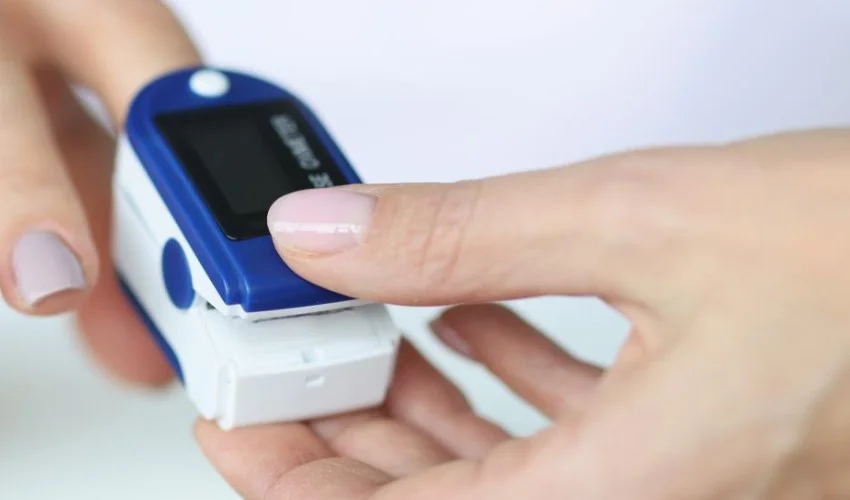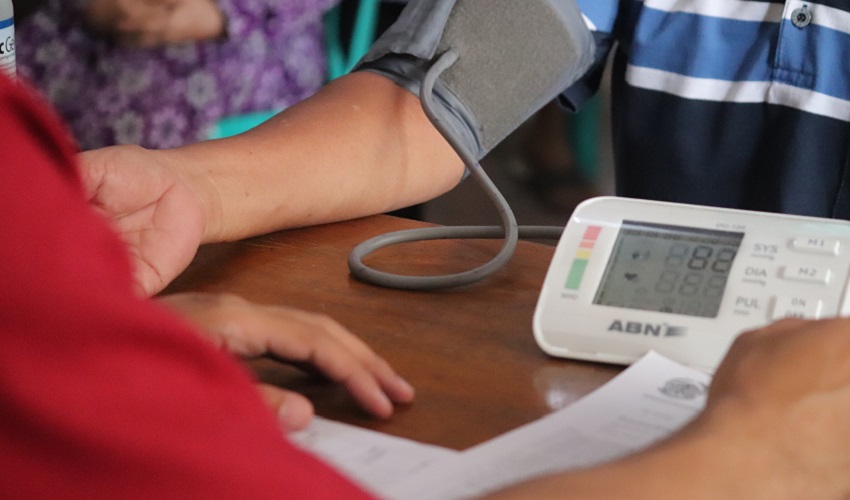Living with type 2 diabetes can be challenging, but with proper knowledge and management, individuals can lead a healthy and fulfilling life. One crucial aspect of managing diabetes is understanding blood glucose levels and target ranges. By monitoring and controlling blood glucose levels effectively, individuals can minimize complications and maintain optimal health. This article aims to provide detailed information on blood glucose levels, target ranges, and the importance of maintaining them for type 2 diabetic patients and their caregivers.
What is Blood Glucose?
Blood glucose, also known as blood sugar, refers to the amount of sugar present in the bloodstream. Glucose serves as the primary source of energy for our body’s cells. It comes from the food we consume, especially carbohydrates. In individuals without diabetes, the body maintains blood glucose levels within a narrow range to ensure proper functioning.
Blood glucose levels can vary throughout the day, influenced by factors such as meals, physical activity, and hormonal regulation. It is important for individuals with type 2 diabetes to monitor their blood glucose levels regularly to understand how different factors affect their levels.
Blood Glucose Regulation
Maintaining stable blood glucose levels is crucial for overall health. The body carefully regulates blood glucose levels through a complex system involving hormones and organs.
Insulin and Glucagon
The hormone insulin, produced by the pancreas, plays a vital role in regulating blood glucose. After a meal, when blood glucose levels rise, insulin is released into the bloodstream. Insulin enables the cells in the body to take up glucose, reducing the glucose levels in the blood.
In contrast, the hormone glucagon, also produced by the pancreas, acts in opposition to insulin. When blood glucose levels drop, such as between meals or during periods of fasting, glucagon is released. It signals the liver to break down glycogen stores and release glucose into the bloodstream, thus increasing blood glucose levels.
The balance between insulin and glucagon ensures that blood glucose levels remain within the desired range.
Liver’s Role in Blood Glucose Regulation
The liver plays a significant role in maintaining blood glucose levels. It acts as a glucose reservoir by storing excess glucose in the form of glycogen. When blood glucose levels decrease, such as during periods of fasting or increased physical activity, the liver releases stored glycogen, converting it back into glucose and releasing it into the bloodstream. This process helps prevent hypoglycemia and maintains blood glucose within the target range.
Blood Glucose Levels and Diabetes
In individuals with diabetes, the body struggles to regulate blood glucose effectively, leading to elevated levels. It is important to understand the various blood glucose levels and their implications.
Normal Blood Glucose Levels
For individuals without diabetes, normal fasting blood glucose levels typically range from 70 to 99 milligrams per deciliter (mg/dL). After eating a meal, blood glucose levels may briefly rise, but they should return to the normal range within a few hours. These normal blood glucose levels allow the body to function optimally without causing harm or complications.
Prediabetes
Prediabetes is a condition where blood glucose levels are higher than normal but not yet high enough to be diagnosed as diabetes. It serves as a warning sign, indicating an increased risk of developing type 2 diabetes in the future. To assess your personal risk, you can use the Diabetes Risk Calculator.
Fasting blood glucose levels between 100 and 125 mg/dL are indicative of prediabetes. Additionally, an HbA1c level between 5.7% and 6.4% may also suggest prediabetes. It is crucial for individuals with prediabetes to make lifestyle changes to prevent or delay the onset of type 2 diabetes.
Lifestyle modifications such as adopting a healthy diet, increasing physical activity, and maintaining a healthy weight can significantly reduce the risk of progressing from prediabetes to diabetes. Regular monitoring of blood glucose levels and working closely with healthcare professionals are essential for managing prediabetes effectively.
| HbA1c Target Range | Description |
|---|---|
| Less than 6.5% | More stringent target range for individuals with good overall health and low risk of hypoglycemia |
| 6.5% to 7% | General target range for most individuals with diabetes |
| 7.5% to 8% | Less stringent target range for individuals with a history of severe hypoglycemia, limited life expectancy, or other medical conditions |
| Above 8% | Generally considered high and may require adjustments in the management plan |
Diabetes Diagnosis
A diagnosis of diabetes is made when blood glucose levels are consistently above the normal range. Fasting blood glucose levels equal to or greater than 126 mg/dL or random blood glucose levels equal to or greater than 200 mg/dL, accompanied by symptoms of diabetes, confirm the diagnosis.
Diagnosis is the first step in effectively managing diabetes. It allows healthcare professionals to develop a personalized treatment plan tailored to the individual’s needs. Early diagnosis is crucial as it helps prevent or manage complications associated with diabetes.
Understanding HbA1c
HbA1c, also known as glycated hemoglobin, is a measure of average blood glucose levels over the past two to three months. It provides valuable information about long-term blood glucose control.
HbA1c Levels and Target Ranges
HbA1c levels are expressed as a percentage. The target range for individuals with diabetes is typically less than 7%. However, target ranges may vary depending on individual circumstances, such as age, overall health, and the presence of other medical conditions.
For some individuals, a more stringent target of less than 6.5% or a less stringent target of 7.5% to 8% may be appropriate. It is important for individuals to work closely with their healthcare team to determine the target HbA1c range that best suits their needs.
Importance of HbA1c Testing
HbA1c testing plays a crucial role in diabetes management. Regular monitoring of HbA1c levels helps assess the effectiveness of diabetes treatment and lifestyle modifications. It provides an overall picture of blood glucose control over time and helps identify trends that may require adjustments in the management plan.
HbA1c testing is usually performed every three to six months, but the frequency may vary depending on individual circumstances. By maintaining HbA1c levels within the target range, individuals can minimize the risk of complications associated with diabetes.
Strategies for Managing Blood Glucose Levels
Managing blood glucose levels requires a comprehensive approach that combines medication, lifestyle modifications, and regular monitoring. Here are some strategies for effectively managing blood glucose levels:
Medication
For many individuals with type 2 diabetes, medication may be necessary to help regulate blood glucose levels. Common medications include oral antidiabetic drugs and, in some cases, insulin. It is important to follow the prescribed medication regimen and consult healthcare professionals for any adjustments or concerns.
Healthy Eating
A healthy diet plays a critical role in managing blood glucose levels. Focus on consuming nutrient-dense foods, including whole grains, lean proteins, fruits, vegetables, and healthy fats. Limit the intake of refined carbohydrates, sugary beverages, and high-fat foods. Consider working with a registered dietitian to develop a personalized meal plan, and use tools like a Weight Loss Calculator to help track and manage your weight loss goals.
Regular Physical Activity
Physical activity has numerous benefits for individuals with diabetes. It helps lower blood glucose levels, improves insulin sensitivity, aids weight management, and enhances overall cardiovascular health. Engage in moderate-intensity aerobic exercises, such as brisk walking, swimming, or cycling, for at least 150 minutes per week. Incorporate strength training exercises to build muscle and improve overall fitness.
Blood Glucose Monitoring
Regular blood glucose monitoring is essential for understanding how various factors impact blood glucose levels. It helps identify patterns, assess the effectiveness of treatment plans, and make necessary adjustments. Use a blood glucose meter to measure blood glucose levels at home, and share the results with healthcare professionals for guidance.
Stress Management and Quality Sleep
Stress and inadequate sleep can affect blood glucose levels. Find healthy ways to manage stress, such as practicing relaxation techniques, engaging in hobbies, or seeking support from loved ones. Aim for 7-9 hours of quality sleep each night to support overall health and well-being.
Understanding blood glucose levels and target ranges is crucial for effective management of type 2 diabetes. By monitoring blood glucose levels, making necessary lifestyle modifications, and working closely with healthcare professionals, individuals can achieve better control over their diabetes and reduce the risk of complications. Remember, each individual’s journey with diabetes is unique, so personalized care and regular communication with healthcare professionals are key to successful diabetes management.




